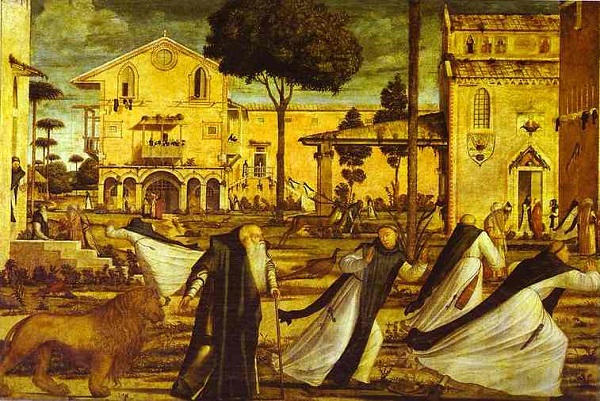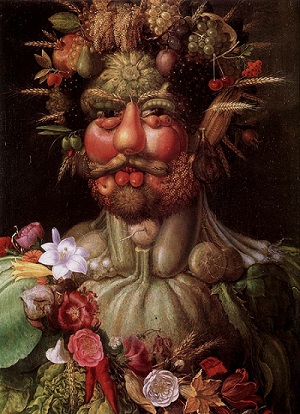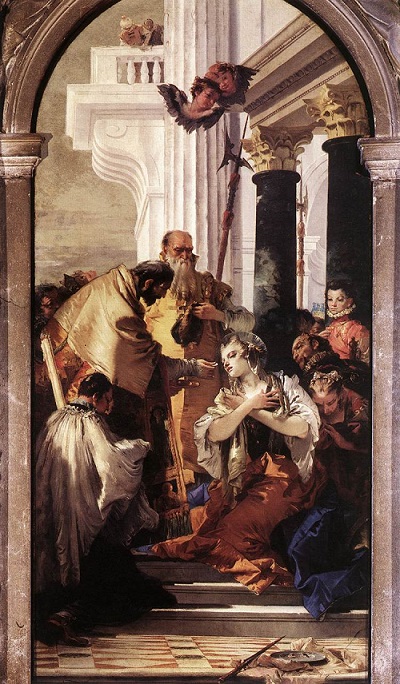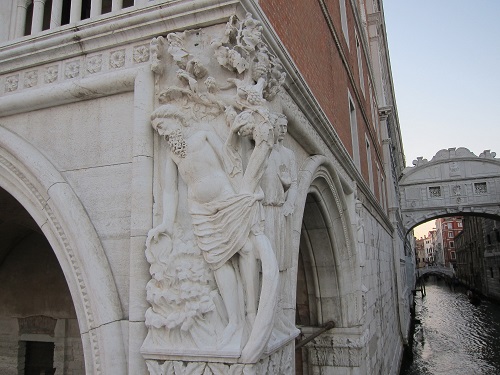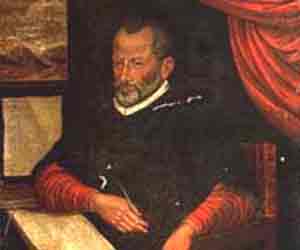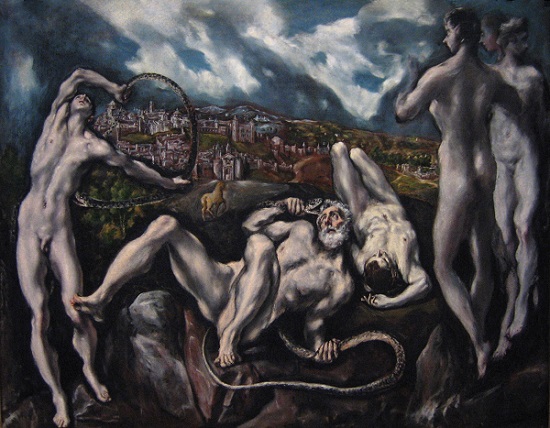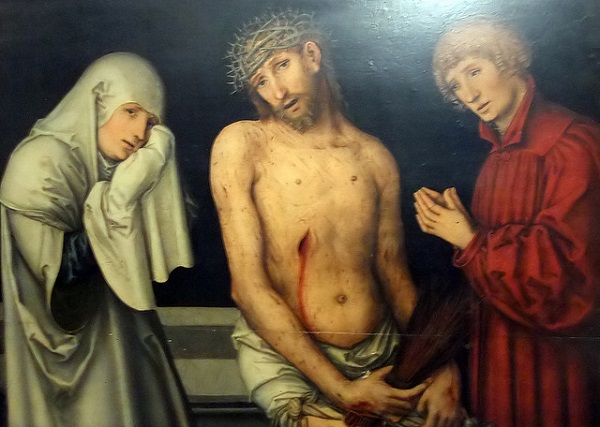
In Room V of the Pinacoteca Museum, the Vatican you will find the undated Pietà (above) by Lucas Cranach the Elder (1472-1553). Lucas Cranach the Elder was perhaps the best-known German Renaissance painter after Albrecht Dürer, and this panel is one of the few works by non-Italian artists in the Pinacoteca.
The art-loving Pope Pius IX acquired the panel in 1851 from the disposal of art treasures of the Augustinian monastery at Kreuzlingen in Switzerland. Through the addition of the grieving Virgin Mary and St.John, this landscape-format panel expands a common motif in Cranach’s work, that of Christ as the Man of Sorrows, into a pietà. The aim of both types of image was to elicit the viewer’s compassion for the suffering Christ, shown here seated on his sarcophagus at the centre of the picture. Christ’s maltreated body bears all the signs of the Passion: the crown of thorns on his bleeding head, the bloody, swollen weals from his scourging, the gaping wound in his side and stigmata from the crucifixion nails. Christ’s open mouth seems to emit a faint moan, and his pain-filled eyes rest on the viewer. His grieving mother Mary and beloved disciple St. John incline their heads towards him and seem to appeal to the view to do exactly the same. The black background has the effect of directing the viewer’s attention to the figures while also lending them a portrait-like presence.
Despite the portrait-like appearance here, there is a real empathy that the artist clearly wants to draw from the viewer, and there is a very powerful and almost tangible sense of anguish on the face of Christ that one cannot help but be drawn to and to that extent, the presence of the Virgin Mary and St. John are in the periphery.

